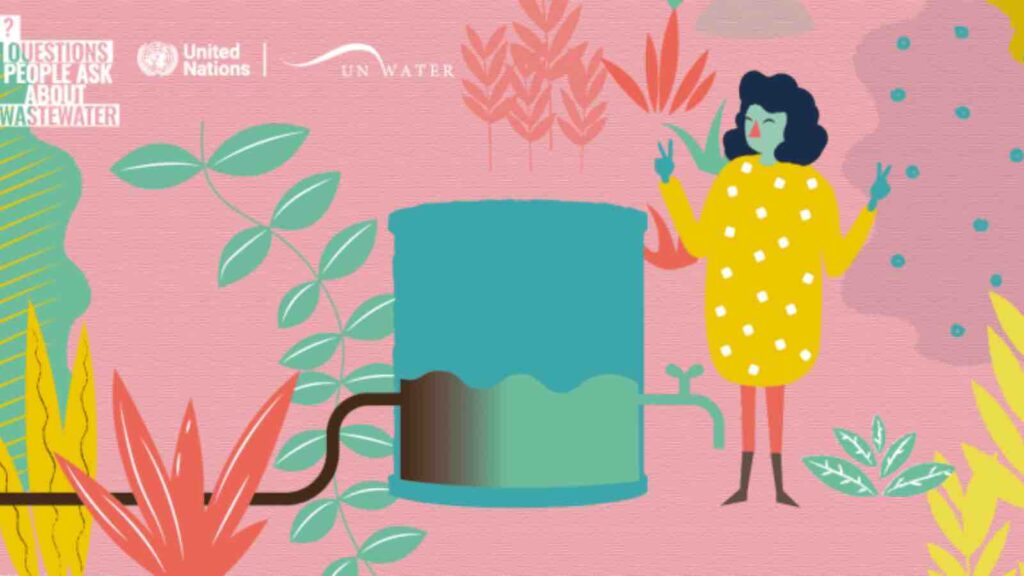Welcome to the second edition of ‘Questions people ask’, where we explain key issues by answering some of the questions we often get asked.
This time, we’re looking at wastewater, which is the water and everything it contains after we have used it – from chemicals to cooking fat, human faeces to urine, agricultural effluent to industrial discharge. We cannot afford to simply let untreated wastewater flow back into nature – it’s dangerous and a huge missed opportunity.
Safely treated wastewater is a precious source of water, energy and nutrients – and wastewater management can create many jobs. So, here are five questions we get asked about wastewater.
RELEVANT SUSTAINABLE GOALS
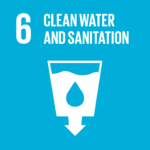
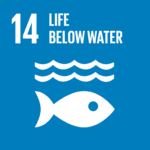
Why is wastewater a problem?
The volume of wastewater that we generate and its overall pollution load – human waste, chemicals, harmful levels of nutrients – are increasing.
At the same time, wastewater management is being seriously neglected, which means a vast and growing quantity of untreated wastewater is being returned to nature, where it can contaminate surface and underground freshwater resources and marine ecosystems.
Wastewater also pollutes beaches, lakes and rivers, thereby degrading nature and our quality of life, and impacting the economic return from recreation and tourism.
- Estimates suggest that the annual production of wastewater was approximately 360-380 billion m3 per year in 2015, and this figure is only increasing. (UNEP)
- Globally, in 2022, only 58 per cent of all wastewater flows generated by households were safely treated before being released into the environment. (UN-Water)
- At least 2 billion people use a drinking water source contaminated with faeces. (WHO)
How does wastewater affect our lives?
The way we collect, treat and dispose of our wastewater – which contains deadly pathogens from human waste, among other harmful contents – has a significant impact on the quality and safety of the water we drink and use in our daily lives.
Sadly, high mortality rates related to poor water quality are common in many parts of the world. Latest data from the World Health Organization show that diseases caused by unsafe water, sanitation and hygiene are responsible for the deaths of around 1,000 children under 5 every day.
Also, poor wastewater management is a major driver of antimicrobial resistance (AMR), particularly wastewater from healthcare settings, intensive animal raising and antimicrobial manufacturing. Untreated wastewater releases resistant bugs and antimicrobial chemicals into water bodies where they can pass on resistance in a vicious cycle that threatens to make everyday infections in humans and animals incurable with antibiotics.
However, many wastewater treatment plants operating today have been designed in a way that does not always allow complete elimination of microcontaminants. The main purpose of these facilities has been to decrease organic matter, mainly nitrogen and phosphorus compounds, which can cause depletion of oxygen and eutrophication of water bodies that receive treated wastewater. Hence, many micropollutants like antibiotics, antibiotic resistant bacteria and antibiotic resistance genes can be transferred to the environment with treated wastewater. Therefore it is important to improve existing wastewater treatment facilitieswhere possible.
- Only 11 per cent of the estimated total of domestic and industrial wastewater produced is currently being reused. The untapped potential for wastewater reuse is around 320 billion m3 per year, with the potential to supply more than 10 times the current global desalination capacity. (UNEP)
What are countries doing about wastewater?
Sustainable Development Goal targets 6.2 and 6.3 requires countries to, by 2030, “achieve universal access to safely manged sanitation systems” and “improve water quality by reducing pollution, eliminating dumping and minimizing release of hazardous chemicals and materials, halving the proportion of untreated wastewater and substantially increasing recycling and safe reuse globally”. Countries measure progress using global indicators.
As an example of rapid change, in Brazil, in the 2000s and 2010s, government-led investment of more than 10 billion USD resulted in 900 wastewater treatment plants being built in the period between 2013 and 2019, significantly improving water quality for millions of people.
- Check out the United Nations Environment Programme’s new report, Wastewater – Turning problem to solution, to see other examples of sustainably managed wastewater systems using low-cost or alternative solutions that allow for a more agile and efficient treatment, including nature-based solutions.
- Find out about wastewater and water quality in your country or region through the UN-Water SDG 6 Data Portal.
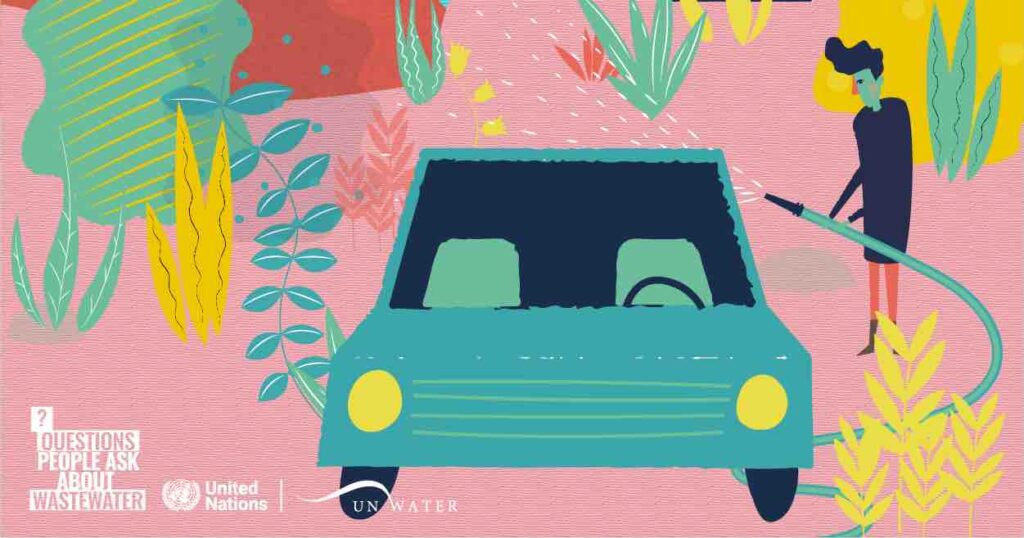
How can we safely reuse wastewater?
Wastewater is the used water collected from toilets, latrine pits, septic tanks, and ‘grey’ water – from washing machines, baths, sinks etc – and rainwater primarily collected from drains.
It’s possible to use grey- and rainwater without much, or any, treatment for uses such as gardening or domestic cleaning.
However, wastewater containing human or animal waste – ‘faecal sludge’ – is hazardous and needs to be filtered and processed (there are various methods) in a treatment facility.
Safely treated wastewater can then be used as a source of water – for activities such as irrigation and industrial cooling – and recovered materials from faecal sludge can be burned for energy or safely used as soil conditioner in food production.
How can I help improve the quality of my wastewater?
There are many things we can do as individuals to help reduce water use and ensure our wastewater is as clean as possible. For instance:
- Turn off the tap while you’re brushing your teeth or doing dishes or scrubbing vegetables. Otherwise, you’re just making wastewater without even using it.
- Put rubbish, oils, chemicals, and food in the bin, not down the drain. The dirtier your wastewater, the more energy and money it costs to treat it.
- Collect used water from your kitchen sink or bathtub and use it on plants and gardens, and to wash your bike or car.
- Improve wastewater management where you work or contact local businesses to ask about their wastewater policies and practices.
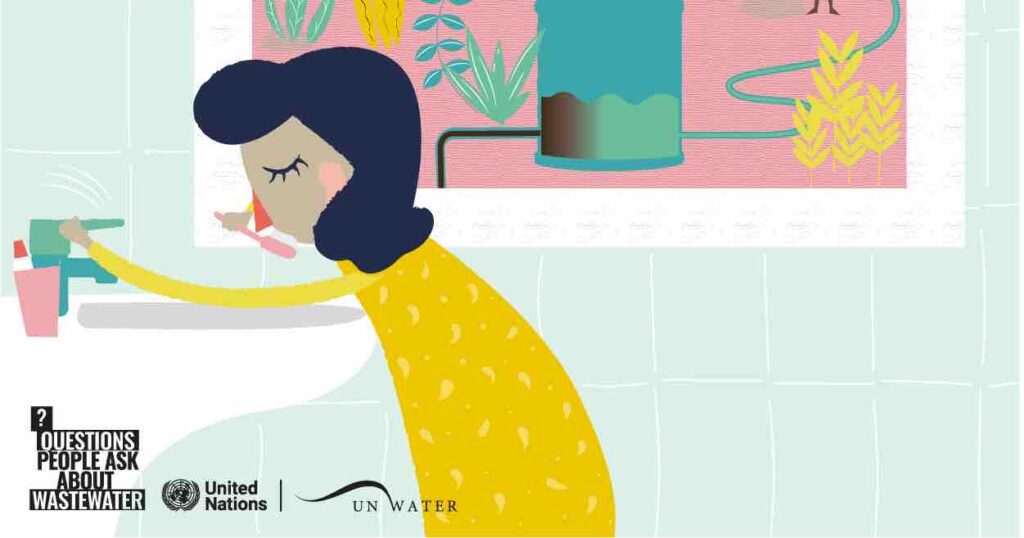
Did you know…how wastewater relates to climate change?
Through the release of potent greenhouse gases such as methane and nitrous oxide, wastewater accounts for about 1.57 per cent of global greenhouse gas emissions, just below the climate harm caused by the global aviation industry. (UNEP).
However, wastewater can become a climate solution: in generating biogas, heat, and electricity, it can produce about five times more energy than is required for its treatment – enough to provide electricity for around half a billion people per year. By reducing water insecurity, good management of wastewater can also support countries’ efforts to adapt to climate change (UNEP).
Singapore safely reuses water (NEWater), collected from the public sewerage system, for drinking water and other uses. Alongside desalination and other measures, NEWater has helped Singapore to reduce water stress and improve water-use efficiency to overcome extreme water scarcity.
In the face of climate change, wastewater is a critical source of alternative water, particularly for agriculture. Recovering costs of wastewater treatment has been a major hurdle for years in developing countries. The need for finance and access to climate finance to improve wastewater treatment will be crucial in the years ahead.
By reducing the quantity and pollution of our wastewater, and by safely reusing it as much as we can, we’re all helping to protect our most precious resource.
The article was initially published here.
Lead image courtesy of UN-Water/World Water Day 2027.


